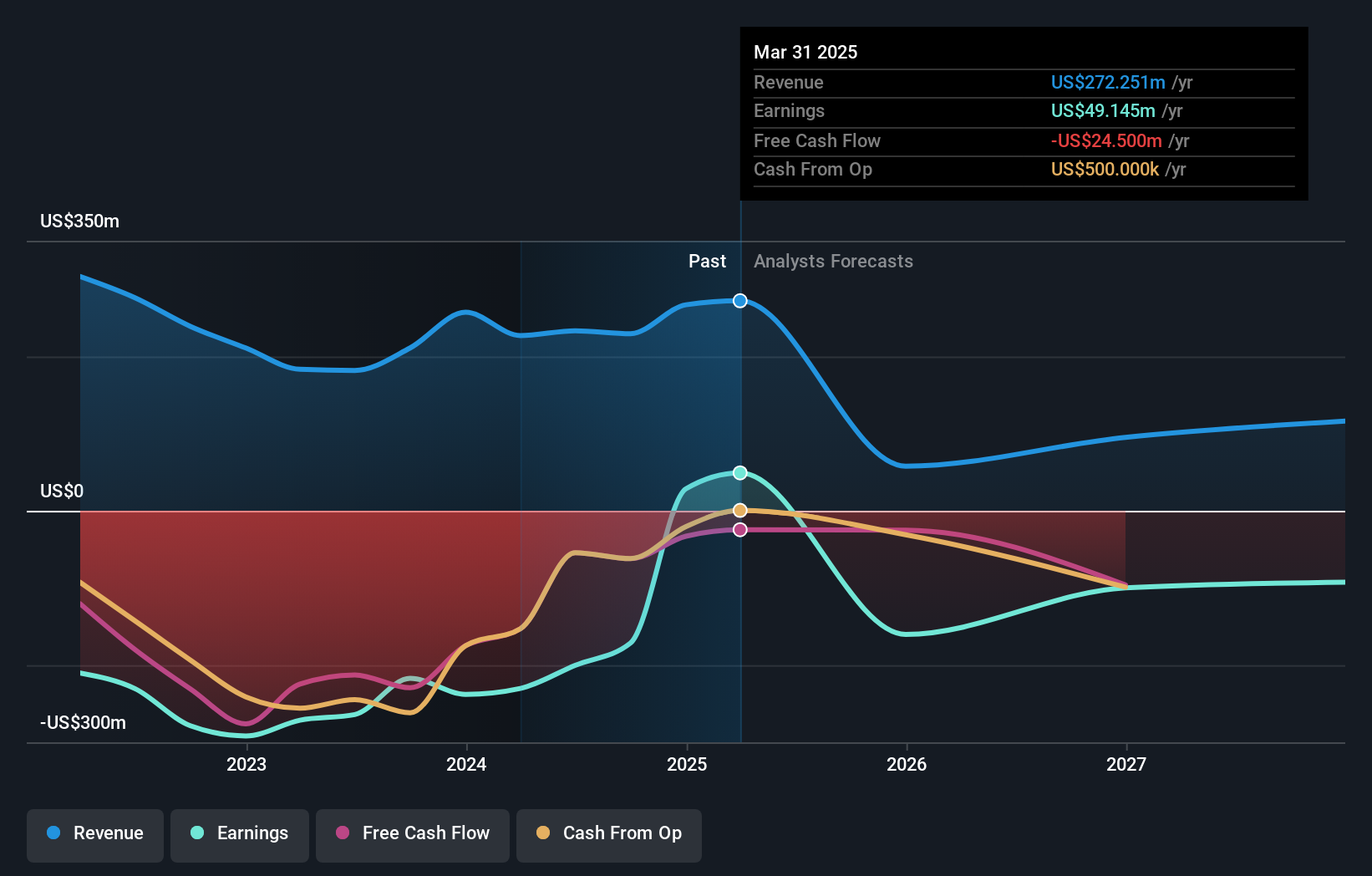Positive week for Coherus Oncology, Inc. (NASDAQ:CHRS) institutional investors who lost 47% over the past year
Key Insights
- Given the large stake in the stock by institutions, Coherus Oncology's stock price might be vulnerable to their trading decisions
- 50% of the business is held by the top 19 shareholders
- Insiders have sold recently
This technology could replace computers: discover the 20 stocks are working to make quantum computing a reality.
To get a sense of who is truly in control of Coherus Oncology, Inc. (NASDAQ:CHRS), it is important to understand the ownership structure of the business. And the group that holds the biggest piece of the pie are institutions with 54% ownership. Put another way, the group faces the maximum upside potential (or downside risk).
Institutional investors would appreciate the 18% increase in share price last week, given their one-year losses have totalled a disappointing 47%.
In the chart below, we zoom in on the different ownership groups of Coherus Oncology.
Check out our latest analysis for Coherus Oncology

What Does The Institutional Ownership Tell Us About Coherus Oncology?
Institutions typically measure themselves against a benchmark when reporting to their own investors, so they often become more enthusiastic about a stock once it's included in a major index. We would expect most companies to have some institutions on the register, especially if they are growing.
Coherus Oncology already has institutions on the share registry. Indeed, they own a respectable stake in the company. This suggests some credibility amongst professional investors. But we can't rely on that fact alone since institutions make bad investments sometimes, just like everyone does. If multiple institutions change their view on a stock at the same time, you could see the share price drop fast. It's therefore worth looking at Coherus Oncology's earnings history below. Of course, the future is what really matters.

Institutional investors own over 50% of the company, so together than can probably strongly influence board decisions. Coherus Oncology is not owned by hedge funds. The Vanguard Group, Inc. is currently the company's largest shareholder with 9.6% of shares outstanding. BlackRock, Inc. is the second largest shareholder owning 9.5% of common stock, and Rubric Capital Management LP holds about 4.5% of the company stock. In addition, we found that Dennis Lanfear, the CEO has 1.0% of the shares allocated to their name.
After doing some more digging, we found that the top 19 have the combined ownership of 50% in the company, suggesting that no single shareholder has significant control over the company.
While it makes sense to study institutional ownership data for a company, it also makes sense to study analyst sentiments to know which way the wind is blowing. There are plenty of analysts covering the stock, so it might be worth seeing what they are forecasting, too.
Insider Ownership Of Coherus Oncology
The definition of an insider can differ slightly between different countries, but members of the board of directors always count. Company management run the business, but the CEO will answer to the board, even if he or she is a member of it.
Insider ownership is positive when it signals leadership are thinking like the true owners of the company. However, high insider ownership can also give immense power to a small group within the company. This can be negative in some circumstances.
Shareholders would probably be interested to learn that insiders own shares in Coherus Oncology, Inc.. It has a market capitalization of just US$102m, and insiders have US$4.4m worth of shares, in their own names. It is good to see some investment by insiders, but we usually like to see higher insider holdings. It might be worth checking if those insiders have been buying.
General Public Ownership
With a 42% ownership, the general public, mostly comprising of individual investors, have some degree of sway over Coherus Oncology. While this group can't necessarily call the shots, it can certainly have a real influence on how the company is run.
Next Steps:
It's always worth thinking about the different groups who own shares in a company. But to understand Coherus Oncology better, we need to consider many other factors. Be aware that Coherus Oncology is showing 6 warning signs in our investment analysis , and 4 of those make us uncomfortable...
Ultimately the future is most important. You can access this free report on analyst forecasts for the company.
NB: Figures in this article are calculated using data from the last twelve months, which refer to the 12-month period ending on the last date of the month the financial statement is dated. This may not be consistent with full year annual report figures.
New: AI Stock Screener & Alerts
Our new AI Stock Screener scans the market every day to uncover opportunities.
• Dividend Powerhouses (3%+ Yield)• Undervalued Small Caps with Insider Buying• High growth Tech and AI CompaniesOr build your own from over 50 metrics.
Explore Now for FreeHave feedback on this article? Concerned about the content? Get in touch with us directly. Alternatively, email editorial-team (at) simplywallst.com.This article by Simply Wall St is general in nature. We provide commentary based on historical data and analyst forecasts only using an unbiased methodology and our articles are not intended to be financial advice. It does not constitute a recommendation to buy or sell any stock, and does not take account of your objectives, or your financial situation. We aim to bring you long-term focused analysis driven by fundamental data. Note that our analysis may not factor in the latest price-sensitive company announcements or qualitative material. Simply Wall St has no position in any stocks mentioned.
免责声明:投资有风险,本文并非投资建议,以上内容不应被视为任何金融产品的购买或出售要约、建议或邀请,作者或其他用户的任何相关讨论、评论或帖子也不应被视为此类内容。本文仅供一般参考,不考虑您的个人投资目标、财务状况或需求。TTM对信息的准确性和完整性不承担任何责任或保证,投资者应自行研究并在投资前寻求专业建议。
热议股票
- 1
- 2
- 3
- 4
- 5
- 6
- 7
- 8
- 9
- 10